
Concept explainers
(a) Use the data in Problem 3 to construct a smooth graph of position versus time. (b) By constructing tangents to the x(t) curve, find the instantaneous velocity of the car at several instants. (c) Plot the instantaneous velocity versus time and, from this information, determine the average acceleration of the car. (d) What was the initial velocity of the car?
(a)
The graph of position versus time.
Answer to Problem 2.18P
Therefore, the smooth graph of position versus time is shown in Figure I.
Explanation of Solution
The following table contains the data of position of the car at various time instants.
Draw the graph of position versus time for the derby car.
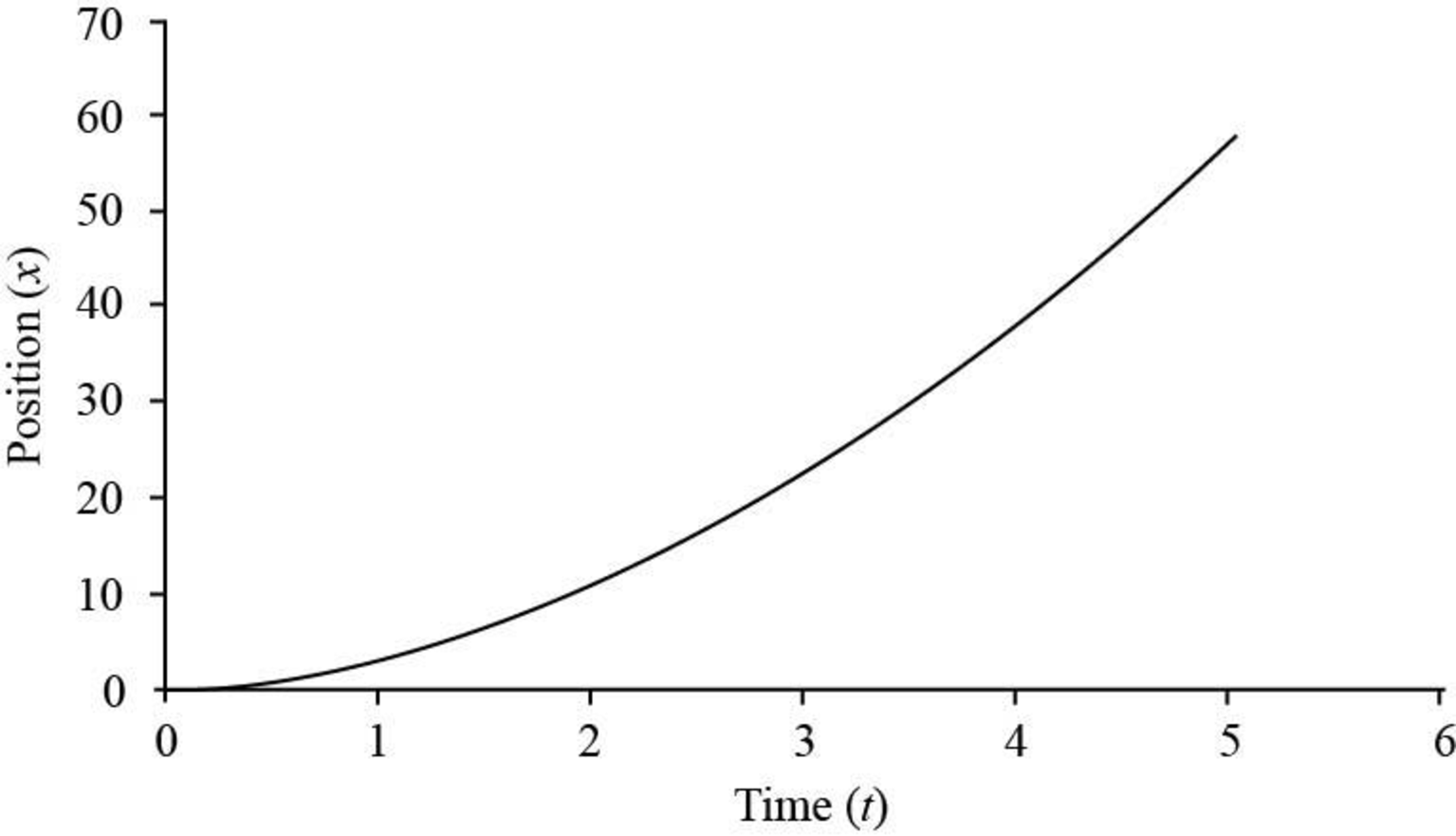
Figure I
In the shown graph, the position of the car at various time instants is plotted in the vertical axis against the time along horizontal direction.
Conclusion:
Therefore, the smooth graph of position versus time is shown in Figure I.
(b)
The instantaneous velocity of the car at various time instants.
Answer to Problem 2.18P
The instantaneous velocity of the car at
Explanation of Solution
The following table contains the data of position of the car at various time instants.
The instantaneous velocity is the slope of the tangent of the position versus time graph at an instant.
Formula to calculate the slope of the tangent is,
Here,
Draw the tangent line at the time instant of
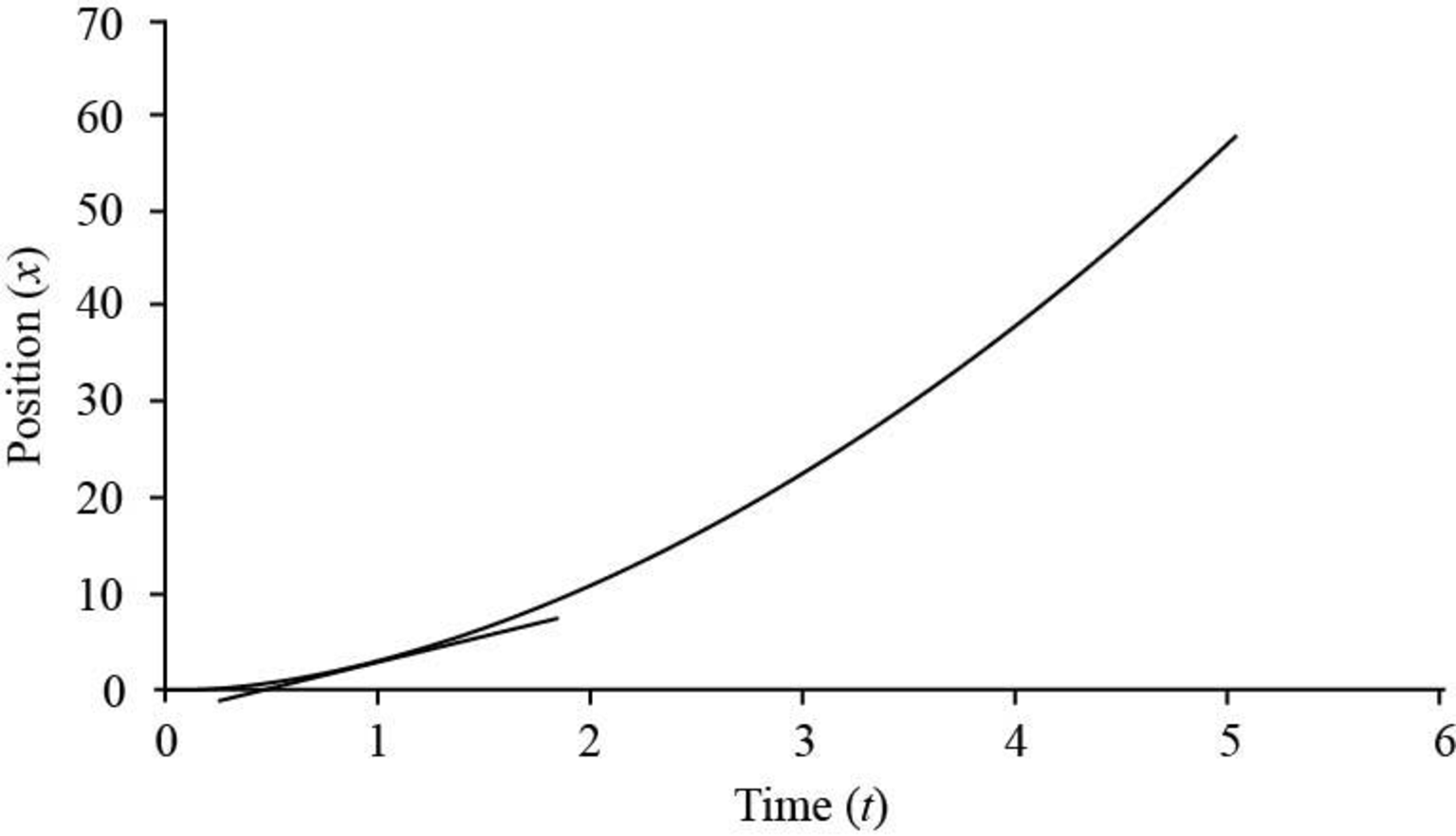
Figure II
Substitute
Therefore, the instantaneous velocity of the car at
Draw the tangent line at the time instant of
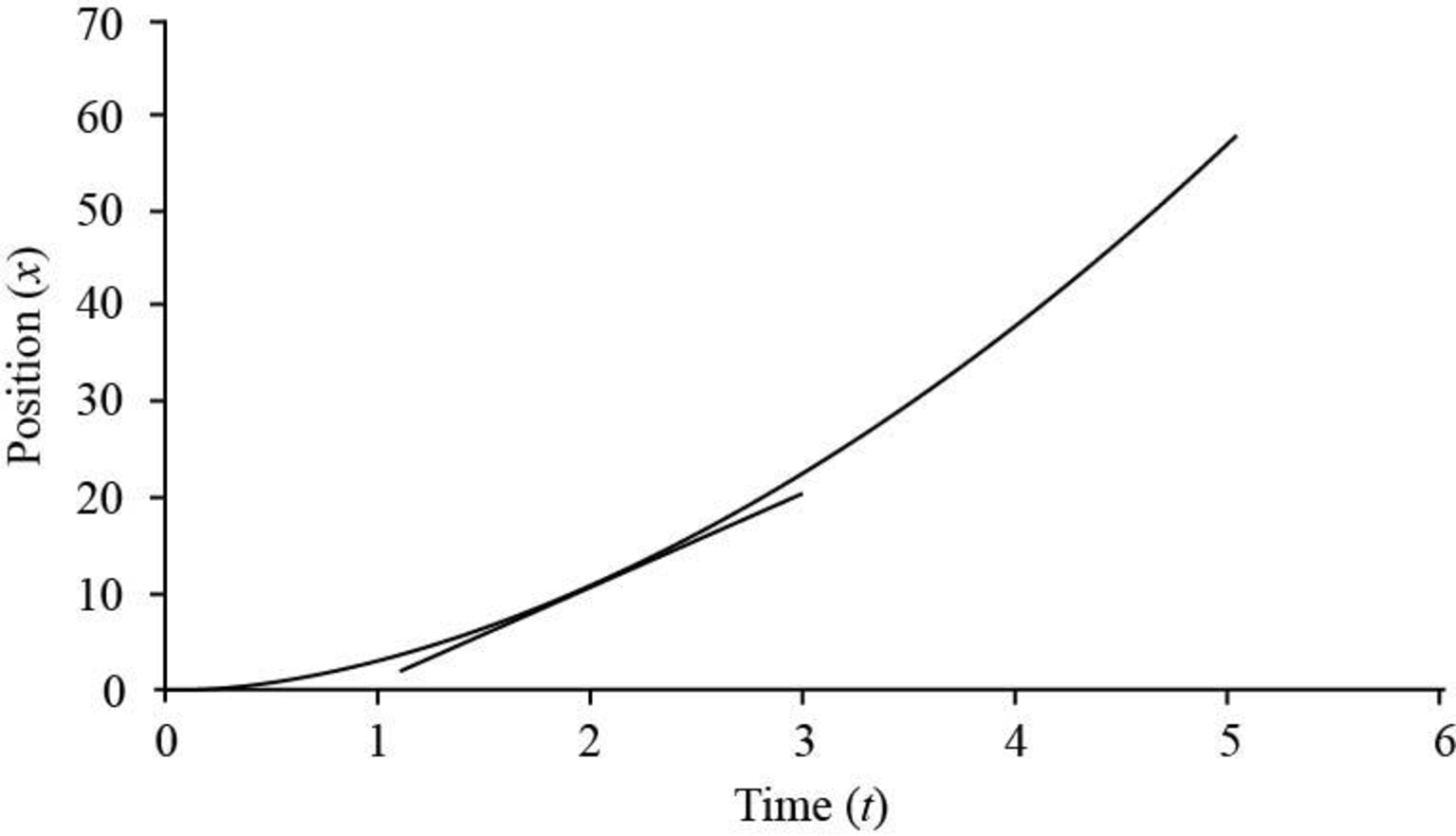
Figure III
Substitute
Therefore, the instantaneous velocity of the car at
Draw the tangent line at the time instant of
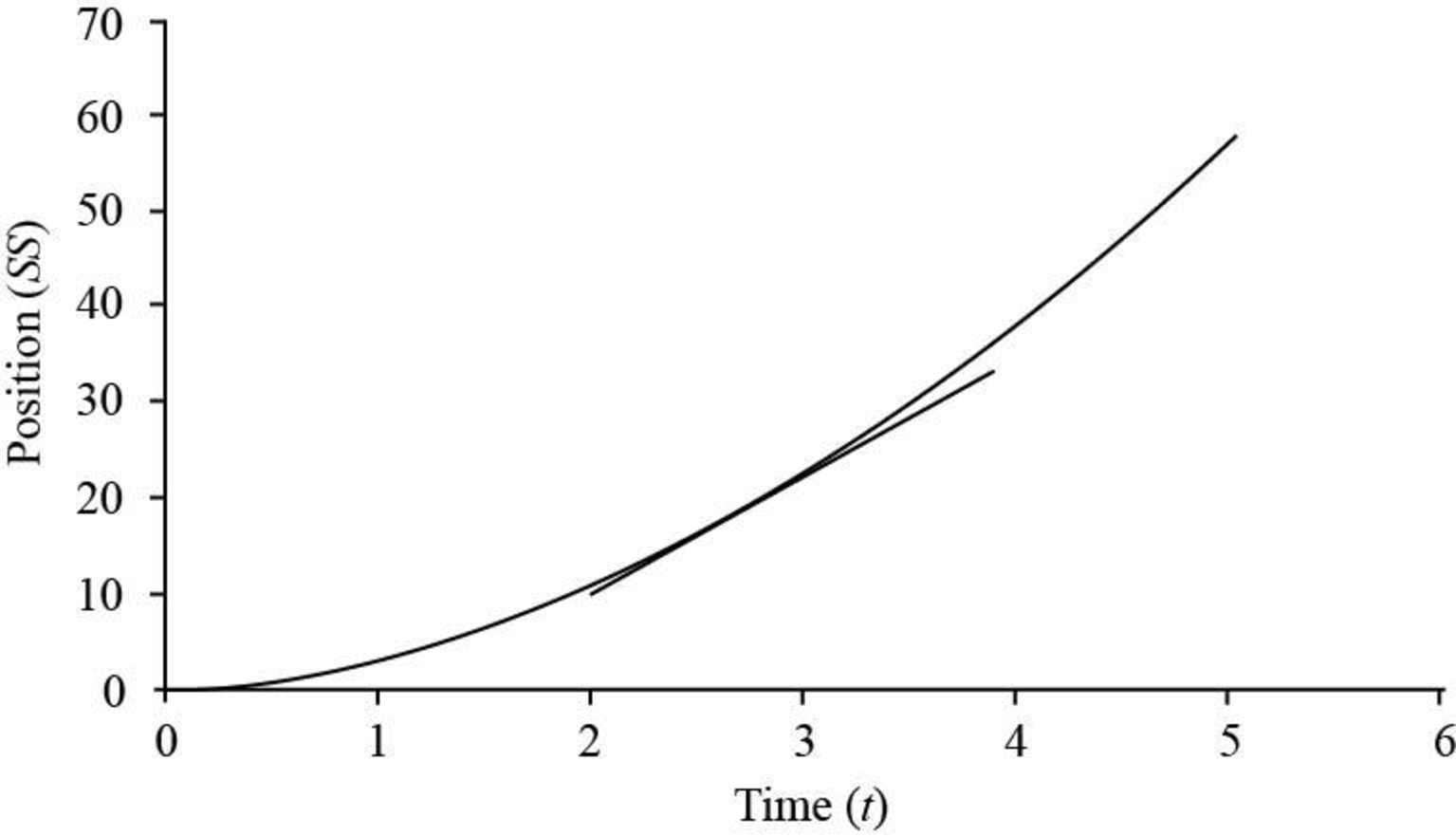
Figure IV
Substitute
Therefore, the instantaneous velocity of the car at
Draw the tangent line at the time instant of
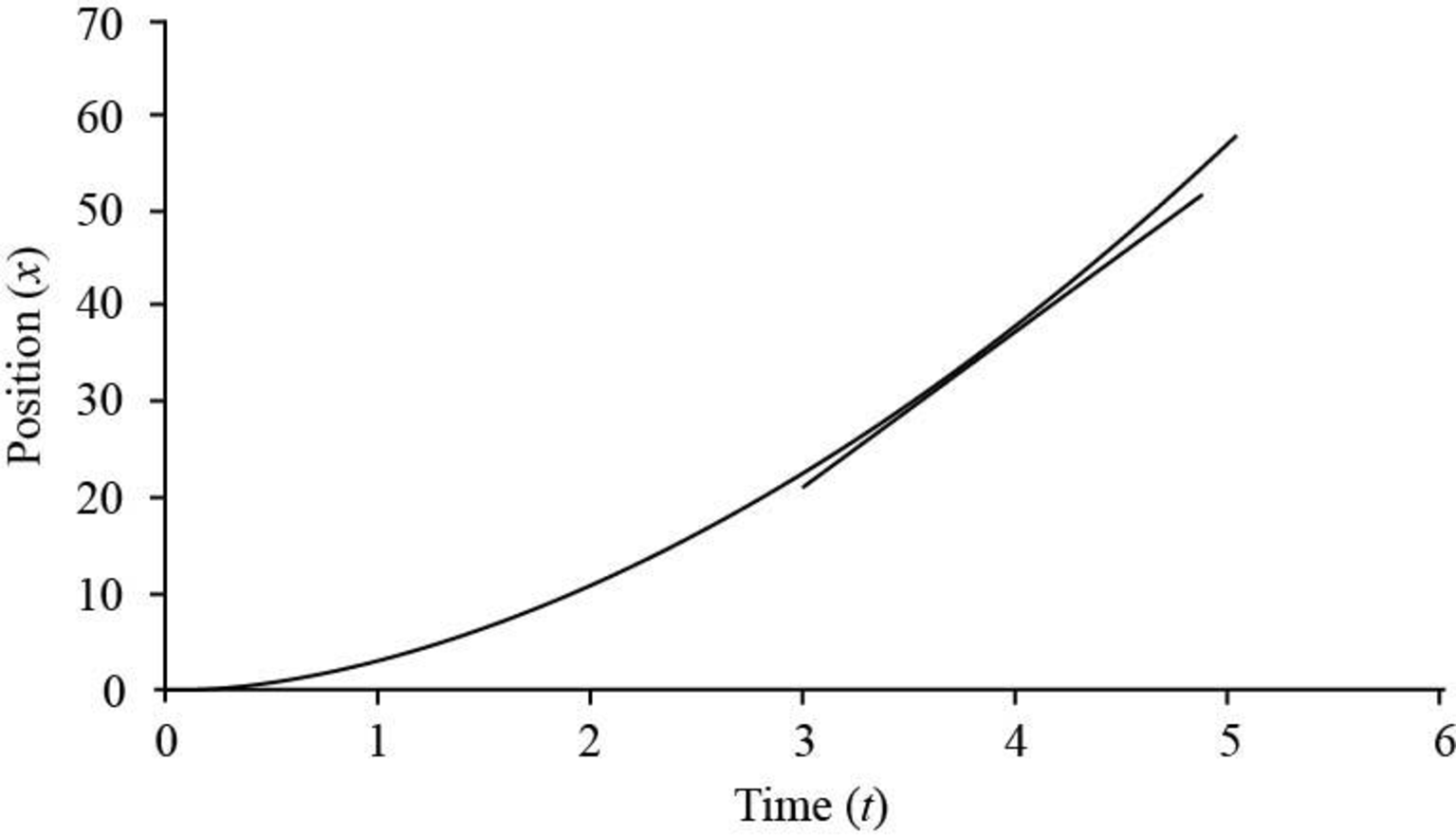
Figure V
Substitute
Therefore, the instantaneous velocity of the car at
Draw the tangent line at the time instant of
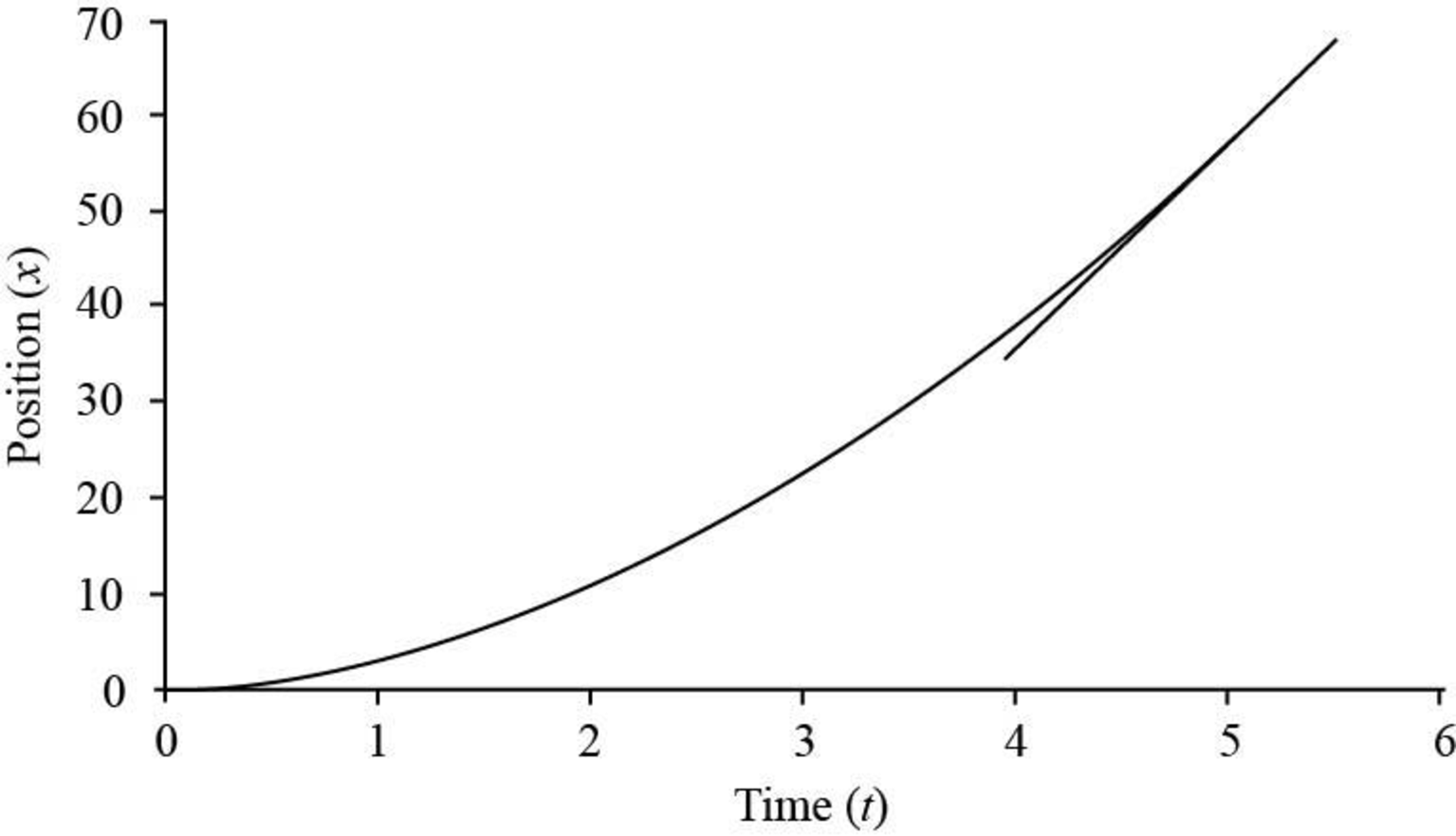
Figure VI
Substitute
Conclusion:
Therefore, the instantaneous velocity of the car at
(c)
The average acceleration of the car.
Answer to Problem 2.18P
The average acceleration of the car is
Explanation of Solution
The following table contains the instantaneous velocity of the car at various times instant.
The graph of instantaneous velocity versus time for the derby car is shown below.
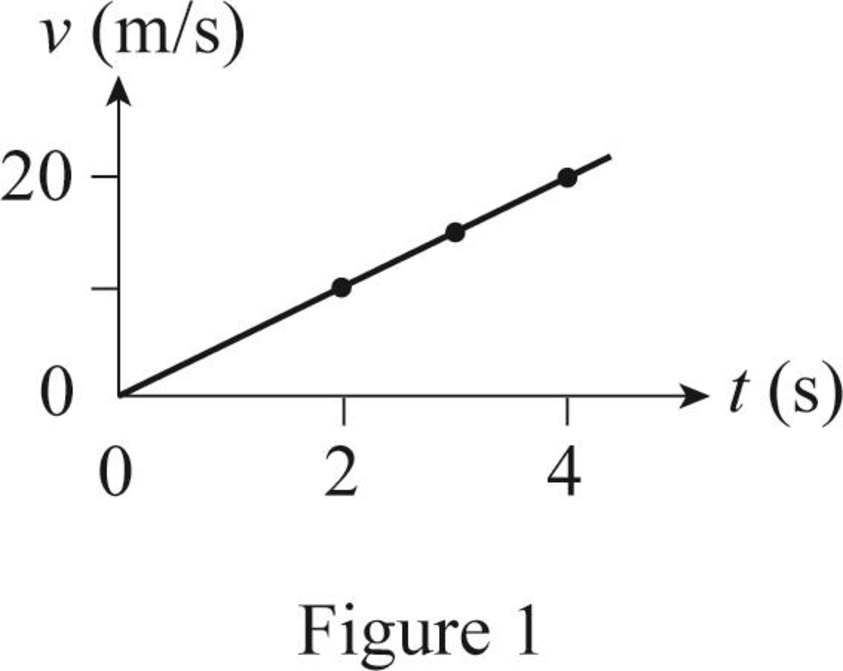
Figure VII
The figure VII shows that velocity of the car increases linearly, it means the acceleration of the car is constant throughout the motion.
Thus, the slope of this graph gives the average acceleration of the car.
Formula to calculate the slope of versus time graph is,
Here,
Substitute
From the graph, the slope of the graph is
Conclusion:
Therefore, the average acceleration of the car is
(d)
The initial velocity of the car.
Answer to Problem 2.18P
The initial velocity of the car is zero.
Explanation of Solution
The equation for the velocity of the car obtained from the graph is,
The first equation of motion gives the velocity of an object at any instant.
Here,
Compare equation (I) and (II).
Thus, the initial velocity of the car is zero.
Conclusion:
Therefore, the initial velocity of the car is zero.
Want to see more full solutions like this?
Chapter 2 Solutions
Bundle: Physics for Scientists and Engineers, Technology Update, 9th Loose-leaf Version + WebAssign Printed Access Card, Multi-Term
Additional Science Textbook Solutions
College Physics: A Strategic Approach (3rd Edition)
Cosmic Perspective Fundamentals
Essentials of Human Anatomy & Physiology (12th Edition)
Fundamentals of Anatomy & Physiology (11th Edition)
- Identical rays of light enter three transparent blocks composed of different materials. Light slows down upon entering the blocks.arrow_forwardFor single-slit diffraction, calculate the first three values of (the total phase difference between rays from each edge of the slit) that produce subsidiary maxima by a) using the phasor model, b) setting dr = 0, where I is given by, I = Io (sin (10) ². 2arrow_forwardA capacitor with a capacitance of C = 5.95×10−5 F is charged by connecting it to a 12.5 −V battery. The capacitor is then disconnected from the battery and connected across an inductor with an inductance of L = 1.55 H . (D)What is the charge on the capacitor 0.0235 s after the connection to the inductor is made? Interpret the sign of your answer. (e) At the time given in part (d), what is the current in the inductor? Interpret the sign of your answer. (f) Atthe time given in part (d), how much electrical energy is stored in the capacitor and how much is stored in the inductor?arrow_forward
 Principles of Physics: A Calculus-Based TextPhysicsISBN:9781133104261Author:Raymond A. Serway, John W. JewettPublisher:Cengage Learning
Principles of Physics: A Calculus-Based TextPhysicsISBN:9781133104261Author:Raymond A. Serway, John W. JewettPublisher:Cengage Learning University Physics Volume 1PhysicsISBN:9781938168277Author:William Moebs, Samuel J. Ling, Jeff SannyPublisher:OpenStax - Rice University
University Physics Volume 1PhysicsISBN:9781938168277Author:William Moebs, Samuel J. Ling, Jeff SannyPublisher:OpenStax - Rice University Physics for Scientists and Engineers, Technology ...PhysicsISBN:9781305116399Author:Raymond A. Serway, John W. JewettPublisher:Cengage Learning
Physics for Scientists and Engineers, Technology ...PhysicsISBN:9781305116399Author:Raymond A. Serway, John W. JewettPublisher:Cengage Learning Glencoe Physics: Principles and Problems, Student...PhysicsISBN:9780078807213Author:Paul W. ZitzewitzPublisher:Glencoe/McGraw-Hill
Glencoe Physics: Principles and Problems, Student...PhysicsISBN:9780078807213Author:Paul W. ZitzewitzPublisher:Glencoe/McGraw-Hill College PhysicsPhysicsISBN:9781938168000Author:Paul Peter Urone, Roger HinrichsPublisher:OpenStax College
College PhysicsPhysicsISBN:9781938168000Author:Paul Peter Urone, Roger HinrichsPublisher:OpenStax College College PhysicsPhysicsISBN:9781285737027Author:Raymond A. Serway, Chris VuillePublisher:Cengage Learning
College PhysicsPhysicsISBN:9781285737027Author:Raymond A. Serway, Chris VuillePublisher:Cengage Learning





